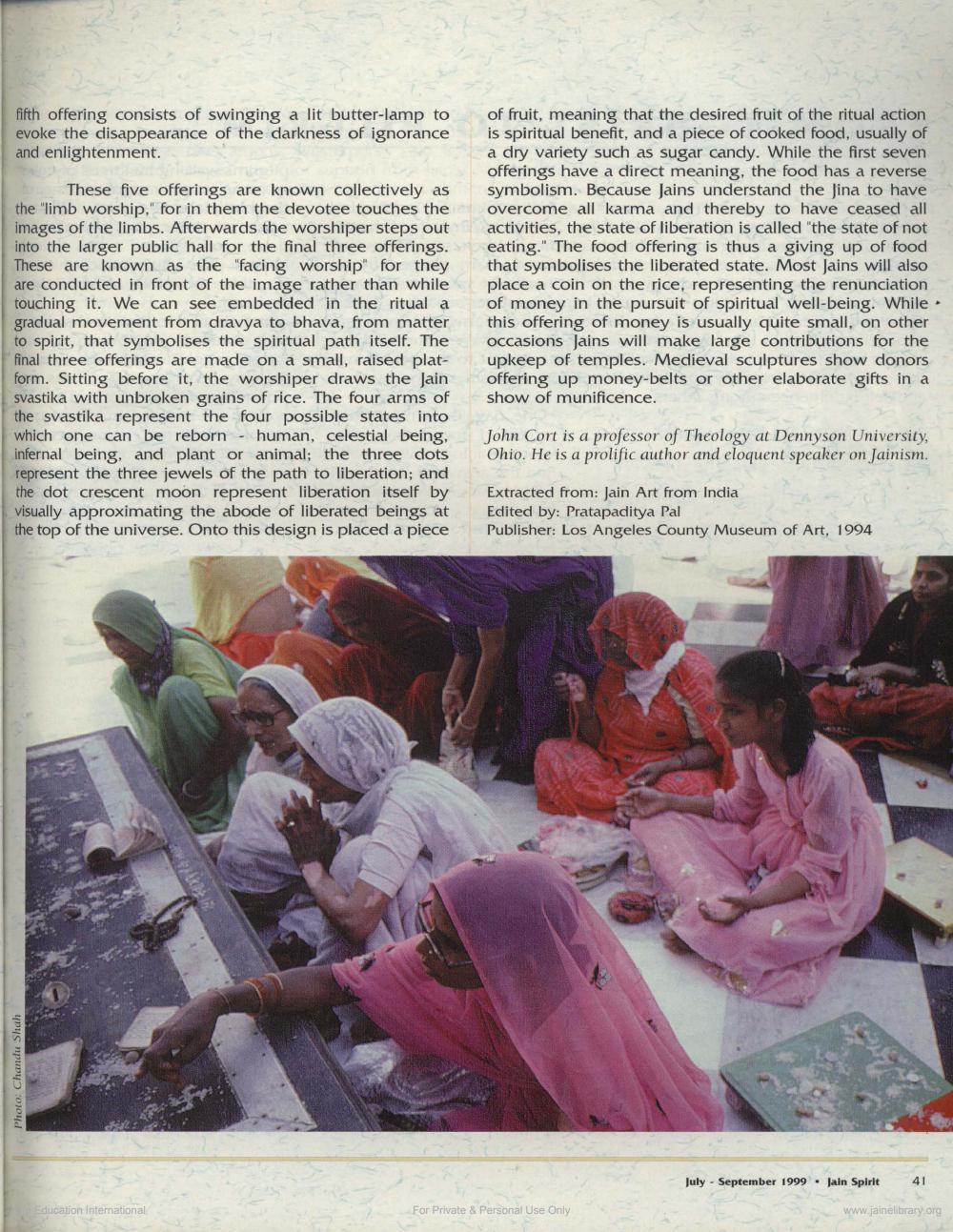________________
fifth offering consists of swinging a lit butter-lamp to evoke the disappearance of the darkness of ignorance and enlightenment.
These five offerings are known collectively as the "limb worship," for in them the devotee touches the images of the limbs. Afterwards the worshiper steps out into the larger public hall for the final three offerings. These are known as the "facing worship" for they are conducted in front of the image rather than while touching it. We can see embedded in the ritual a gradual movement from dravya to bhava, from matter to spirit, that symbolises the spiritual path itself. The final three offerings are made on a small, raised platform. Sitting before it, the worshiper draws the Jain svastika with unbroken grains of rice. The four arms of the svastika represent the four possible states into which one can be reborn human, celestial being, infernal being, and plant or animal; the three dots represent the three jewels of the path to liberation; and the dot crescent moon represent liberation itself by visually approximating the abode of liberated beings at the top of the universe. Onto this design is placed a piece
Chandu Shah
P
Education International
2180074
of fruit, meaning that the desired fruit of the ritual action is spiritual benefit, and a piece of cooked food, usually of a dry variety such as sugar candy. While the first seven offerings have a direct meaning, the food has a reverse symbolism. Because Jains understand the Jina to have overcome all karma and thereby to have ceased all activities, the state of liberation is called "the state of not eating." The food offering is thus a giving up of food that symbolises the liberated state. Most Jains will also place a coin on the rice, representing the renunciation of money in the pursuit of spiritual well-being. While⚫ this offering of money is usually quite small, on other occasions Jains will make large contributions for the upkeep of temples. Medieval sculptures show donors offering up money-belts or other elaborate gifts in a show of munificence.
John Cort is a professor of Theology at Dennyson University, Ohio. He is a prolific author and eloquent speaker on Jainism.
Extracted from: Jain Art from India
Edited by: Pratapaditya Pal Publisher: Los Angeles County Museum of Art, 1994
For Private & Personal Use Only
July September 1999 Jain Spirit
-
41
www.jainelibrary.org




